The design freelancing landscape in 2025 is vibrant, competitive, and diverse. Clients now seek comprehensive design systems, UI/UX flows, 3D assets, motion graphics, and bespoke branding, not just logos. To thrive, designers need platforms that align with their style, specialty, and pricing power.
Here’s a curated list of the best freelancing platforms for designers, tailored to connect visual talent with design-first clients in 2025.
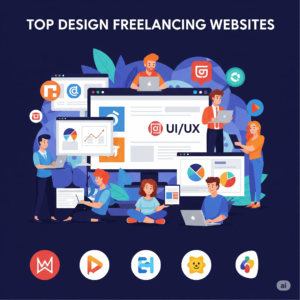
Flexable
Flexable is gaining momentum in the US and India, with over 19,800 freelancers and 1,500 partnered agencies. More than a job board, it’s a community blending solo designers with agency-grade projects. Its curated onboarding and focus on quality make it ideal for UI/UX and branding pros seeking scalable gigs.
Why It’s Great:
-
Strong growth in key design markets
-
Combines solo and agency collaboration
-
Streamlined process ensures quality clients
The Downsides:
-
Global recognition still developing
-
Limited niche design role diversity
-
Smaller client base for specialized skills
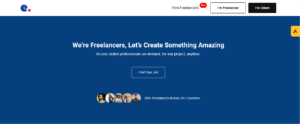
Toptal
Toptal’s rigorous vetting accepts only the top 3% of applicants, connecting seasoned designers with high-budget projects from top-tier brands. While known for tech, its design category (UI/UX, branding) is robust, making it perfect for experienced designers targeting premium clients.
Why It’s Great:
-
Elite clients with big budgets
-
High-value design projects
-
Vetting boosts credibility
The Downsides:
-
Highly selective entry process
-
Focused on tech and design
-
Not beginner-friendly

Upwork
Upwork remains a powerhouse in 2025, offering designers opportunities in UI/UX, graphic design, and branding. It serves startups and enterprises, with AI-driven job matching enhancing visibility for short-term gigs or long-term contracts.
Why It’s Great:
-
Diverse design project categories
-
Trusted by global brands
-
Flexible project durations
The Downsides:
-
High competition for new designers
-
Fees range from 10% to 20%
-
Algorithm-driven visibility
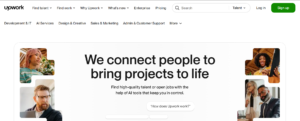
Fiverr
Fiverr’s fixed-price model excels for designers in branding, illustration, and motion graphics. Its intuitive platform and Fiverr Neo’s AI recommendations help craft tailored services and connect with clients efficiently.
Why It’s Great:
-
Ideal for niche, productized design services
-
Quick setup for selling
-
Fiverr Neo enhances client matching
The Downsides:
-
Price competition lowers value
-
Limited gig customization
-
Ratings impact visibility

99designs by VistaPrint
99designs is renowned for its contest-style model, where designers submit concepts and clients pay the winner. Its direct-hire option allows experienced designers to work one-on-one, ideal for graphic and branding projects.
Why It’s Great:
-
High exposure via contests
-
Direct-hire for relationship-based work
-
Strong brand recognition
The Downsides:
-
Contests can be time-intensive
-
Only winners get paid
-
Focused on graphic and branding work
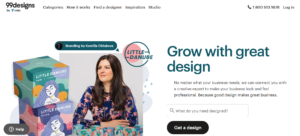
Designhill
Designhill caters to graphic designers, illustrators, and branding specialists with contests, direct projects, and a marketplace for selling artwork. It’s a versatile choice for designers seeking diverse income streams.
Why It’s Great:
-
Contests, projects, and marketplace income
-
Strong for branding and visual identity
-
Easy portfolio and bidding tools
The Downsides:
-
Lower visibility without proactivity
-
Contests may yield unpaid work
-
Pricing can skew low for beginners

Working Not Working
Working Not Working is an invite-only platform for graphic designers, illustrators, and art directors. It connects creatives with brands like Apple and Google, offering high-paying, high-visibility design gigs.
Why It’s Great:
-
Trusted by top global brands
-
High-value design projects
-
Quality-focused community
The Downsides:
-
Application or invite-only
-
Not for beginners
-
Fewer listings than open platforms
Creative Market
Creative Market is a marketplace for selling design assets like fonts and templates, doubling as a portfolio hub for custom freelance work. It’s ideal for designers blending passive income with client projects.
Why It’s Great:
-
Passive income from assets
-
High portfolio visibility
-
Attracts design-focused clients
The Downsides:
-
Primarily product-focused
-
Payouts tied to asset sales
-
Limited direct project support

Coroflot
Coroflot combines a job board with a portfolio platform, focusing on industrial, product, and graphic design. Its open portfolio system ensures high visibility for designers targeting creative industries.
Why It’s Great:
-
Strong portfolio exposure
-
Focused on creative design roles
-
Transparent job board
The Downsides:
-
Fewer freelance-specific listings
-
Less active than competitors
-
US-centric employer base

AIGA Design Jobs
Run by the American Institute of Graphic Arts, AIGA Design Jobs connects designers with freelance and full-time roles. It’s a trusted board for pitching serious employers, though freelancers manage outreach independently.
Why It’s Great:
-
Reputable design-focused board
-
Clients value creative expertise
-
Open to freelance roles
The Downsides:
-
No project management tools
-
US-skewed listings
-
Manual outreach required

ArtStation
ArtStation is the go-to for digital artists, 3D modelers, and illustrators in gaming and film. Its job board offers freelance and contract roles, while portfolios attract studios and creative directors.
Why It’s Great:
-
Portfolio-first for digital art
-
Trusted by entertainment studios
-
Niche freelance opportunities
The Downsides:
-
High competition from top artists
-
Industry-specific focus
-
Requires specialized skills

Folio.YGD
Folio.YGD is an invite-only platform for graphic designers and illustrators. Its curated portfolios attract agencies and art directors, generating high-quality freelance inquiries for standout talent.
Why It’s Great:
-
High-quality portfolio exposure
-
Attracts agency scouts
-
Simple, focused presentation
The Downsides:
-
Invite-only submissions
-
No direct hiring tools
-
Requires polished portfolios
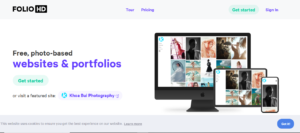
PeoplePerHour
UK-based PeoplePerHour supports designers with gig-style and proposal-based projects in graphic design and UI/UX. Its transparent ratings make it viable for designers targeting English-speaking clients.
Why It’s Great:
-
Strong for design gigs
-
Flexible project options
-
Transparent ranking system
The Downsides:
-
Slower support responses
-
Budget-conscious clients
-
Limited non-English reach

Guru.com
Guru offers designers flexibility in graphic and UI/UX projects. Its SafePay and workroom tools ensure smooth collaboration, and lower fees make it appealing for steady design gigs.
Why It’s Great:
-
Flexible payment options
-
User-friendly project tools
-
Competitive fees
The Downsides:
-
Smaller project volume
-
Dated interface
-
Limited freelancer marketing

Dribbble
Dribbble’s portfolio platform doubles as a freelance job hub for UI/UX and branding designers. Its job board and invite-only talent pools connect creatives with design-forward companies.
Why It’s Great:
-
Strong portfolio visibility
-
Attracts design-focused clients
-
Vibrant creative community
The Downsides:
-
Pro features require payment
-
No project management tools
-
Visibility needs strong portfolios
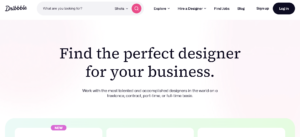
Behance
Behance, owned by Adobe, blends portfolio hosting with job discovery for designers in illustration, photography, and UI/UX. It attracts creative directors, generating high-quality inbound leads.
Why It’s Great:
-
Powerful portfolio platform
-
Adobe tool integration
-
Passive lead generation
The Downsides:
-
Not a full marketplace
-
No payment or project tools
-
Competitive creative saturation

Final Takeaway
In 2025, freelance design is about finding work that matches your creative vision. Whether you’re crafting UI flows, 3D assets, or branding systems, these platforms connect you with clients who value your expertise. Choose one that amplifies your style and goals to build a thriving design career.
